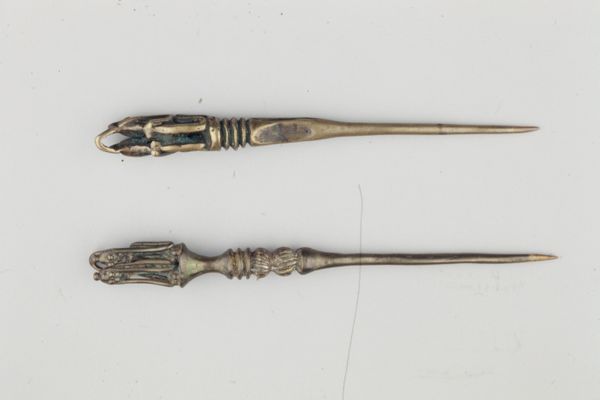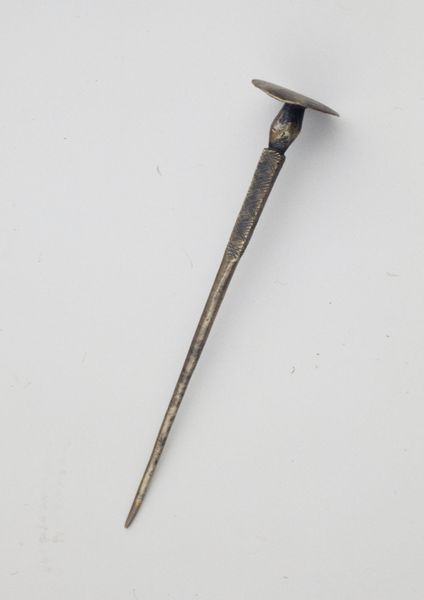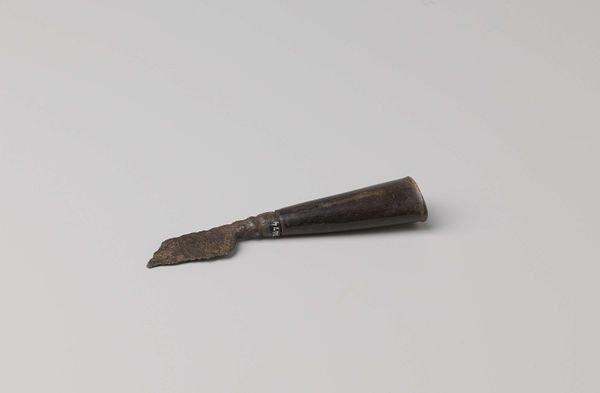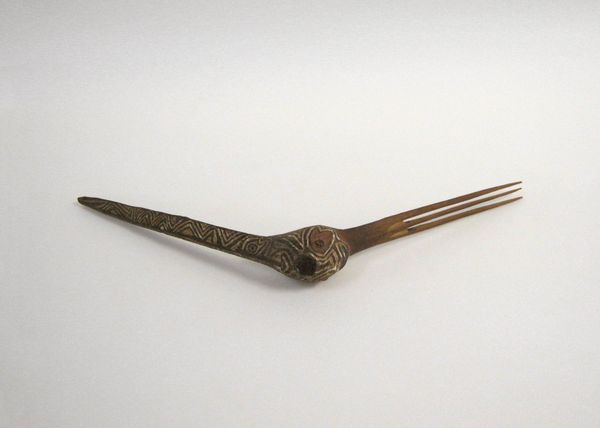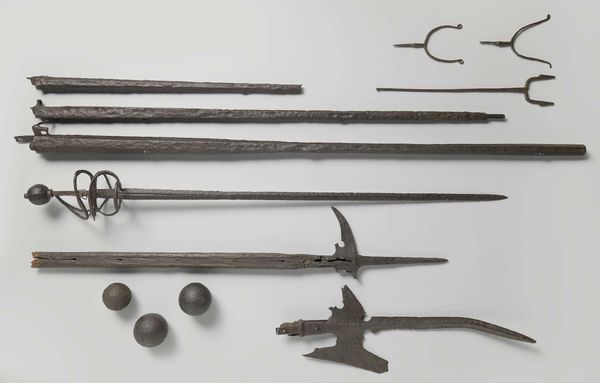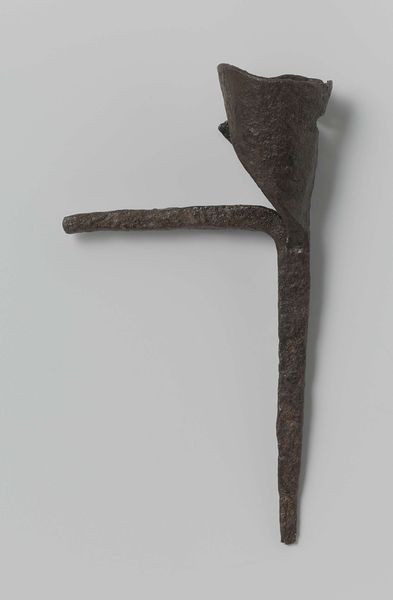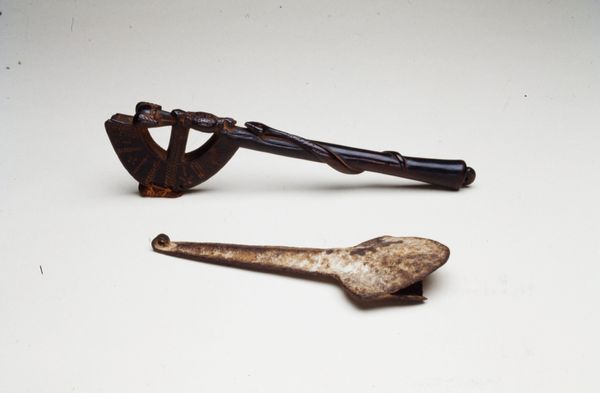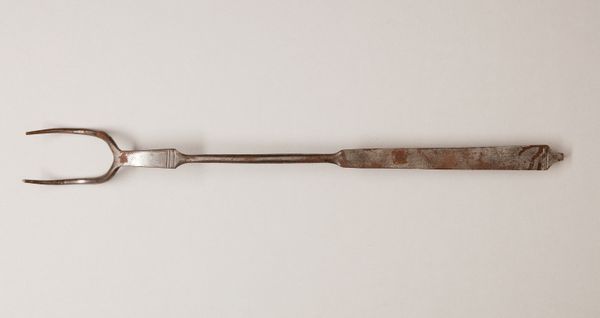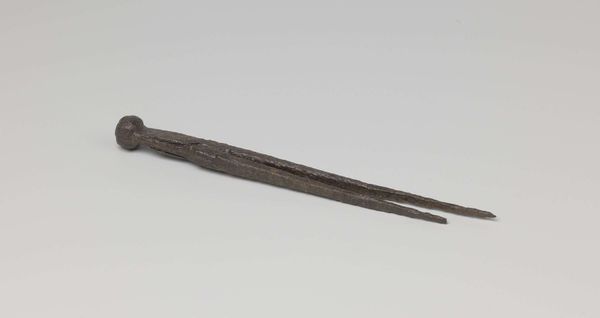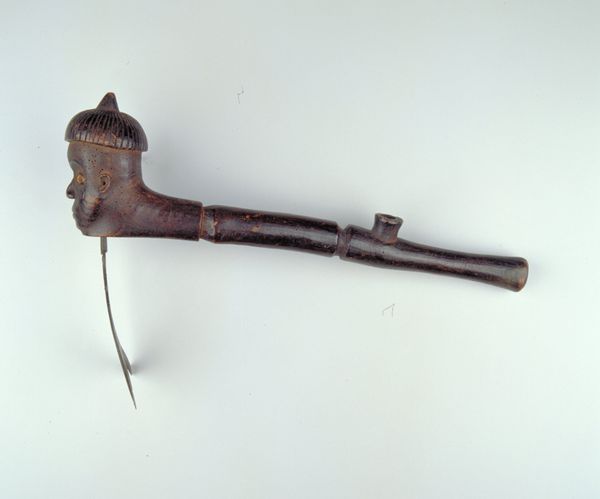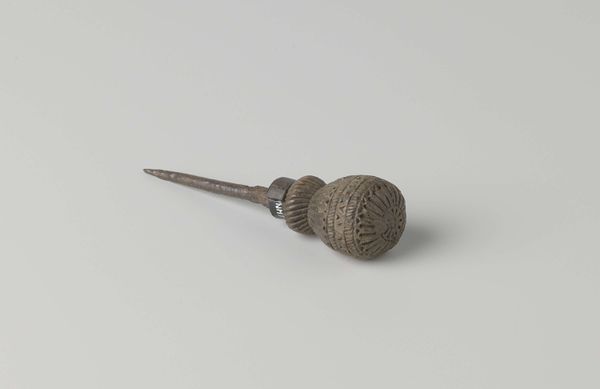
metal, bronze, sculpture
#
metal
#
sculpture
#
bronze
#
figuration
#
sculpture
Dimensions: 2 7/8 x 5/8 in. (7.3 x 1.59 cm)
Copyright: Public Domain
These hairpins were crafted by the Mangbetu people of the Democratic Republic of Congo. The Mangbetu are renowned for their distinctive elongated heads, a cultural practice known as Lipombo. The Lipombo tradition began in infancy, where the heads of babies were tightly wrapped with cloth, altering the shape of their skulls as they grew. This practice was not merely aesthetic; it was a powerful marker of status and identity. As members of the ruling class, elongated heads distinguished the Mangbetu elite from other groups. These hairpins, then, were not just functional objects, but potent symbols of belonging, identity, and power. Adorning the elaborate hairstyles that accentuated the elongated head, hairpins signified an individual’s place within the Mangbetu social hierarchy, reflecting the intricate relationship between body modification, identity, and social status. They speak to the complex interplay of tradition, identity, and power.
Comments
No comments
Be the first to comment and join the conversation on the ultimate creative platform.
